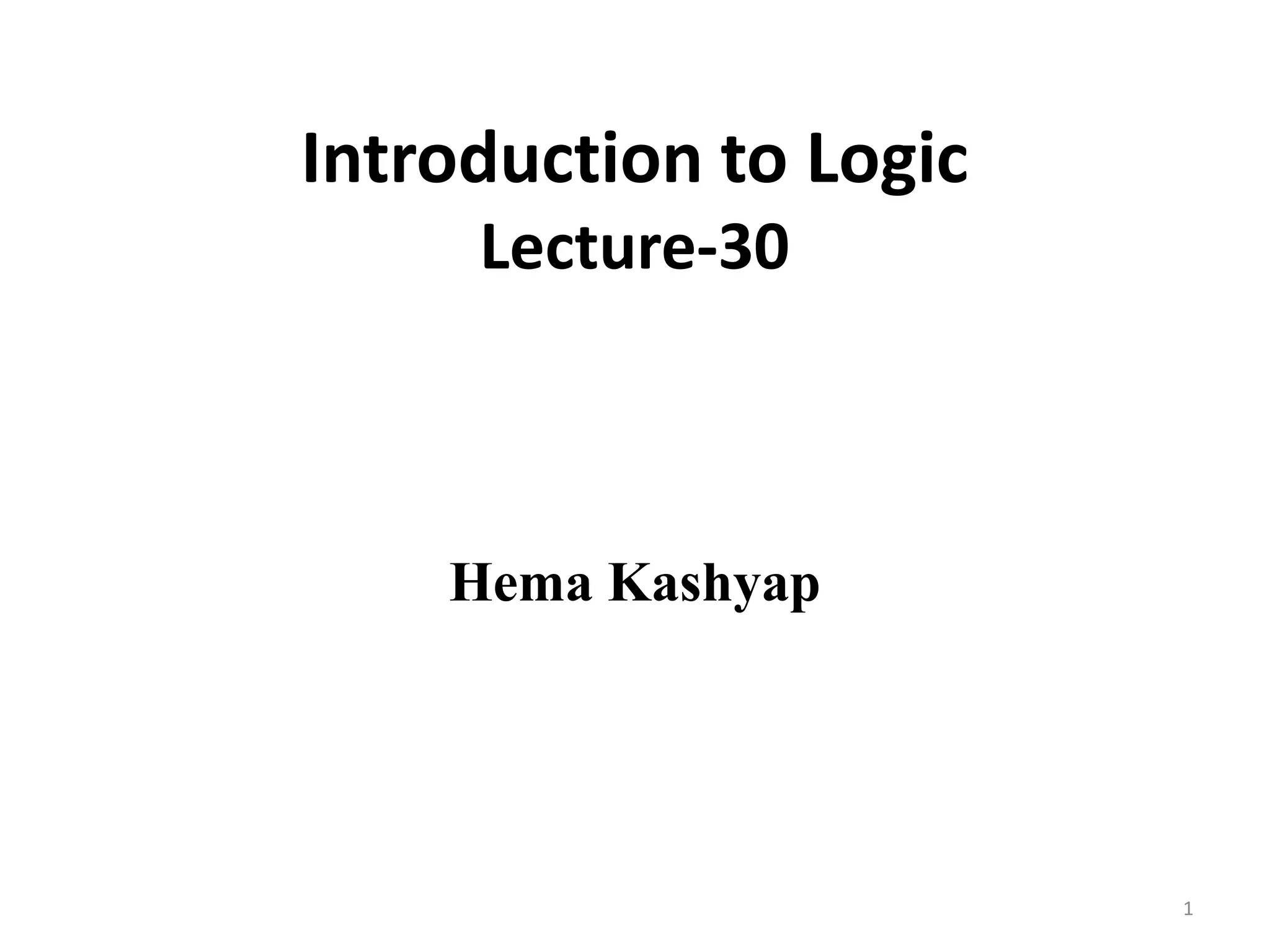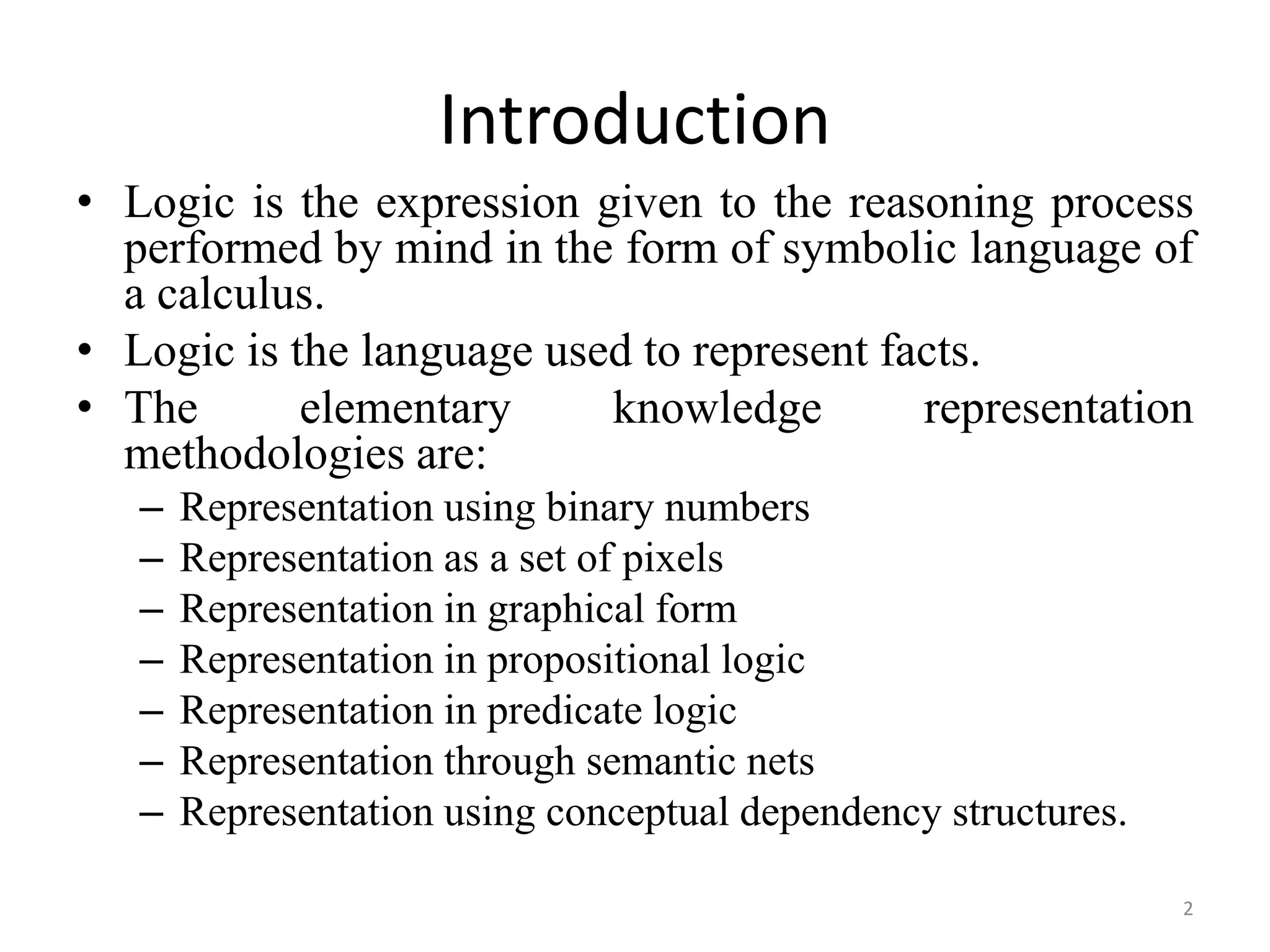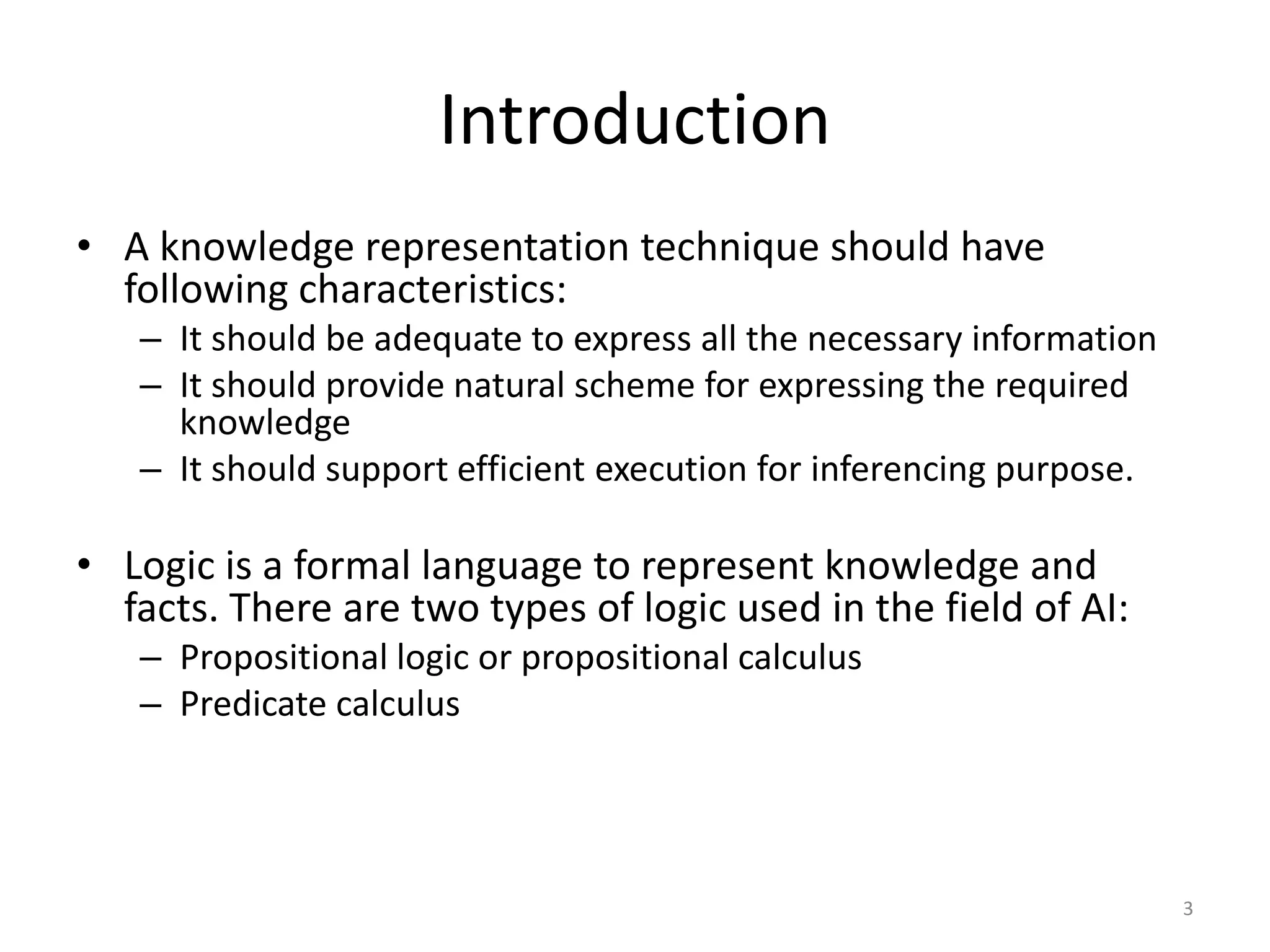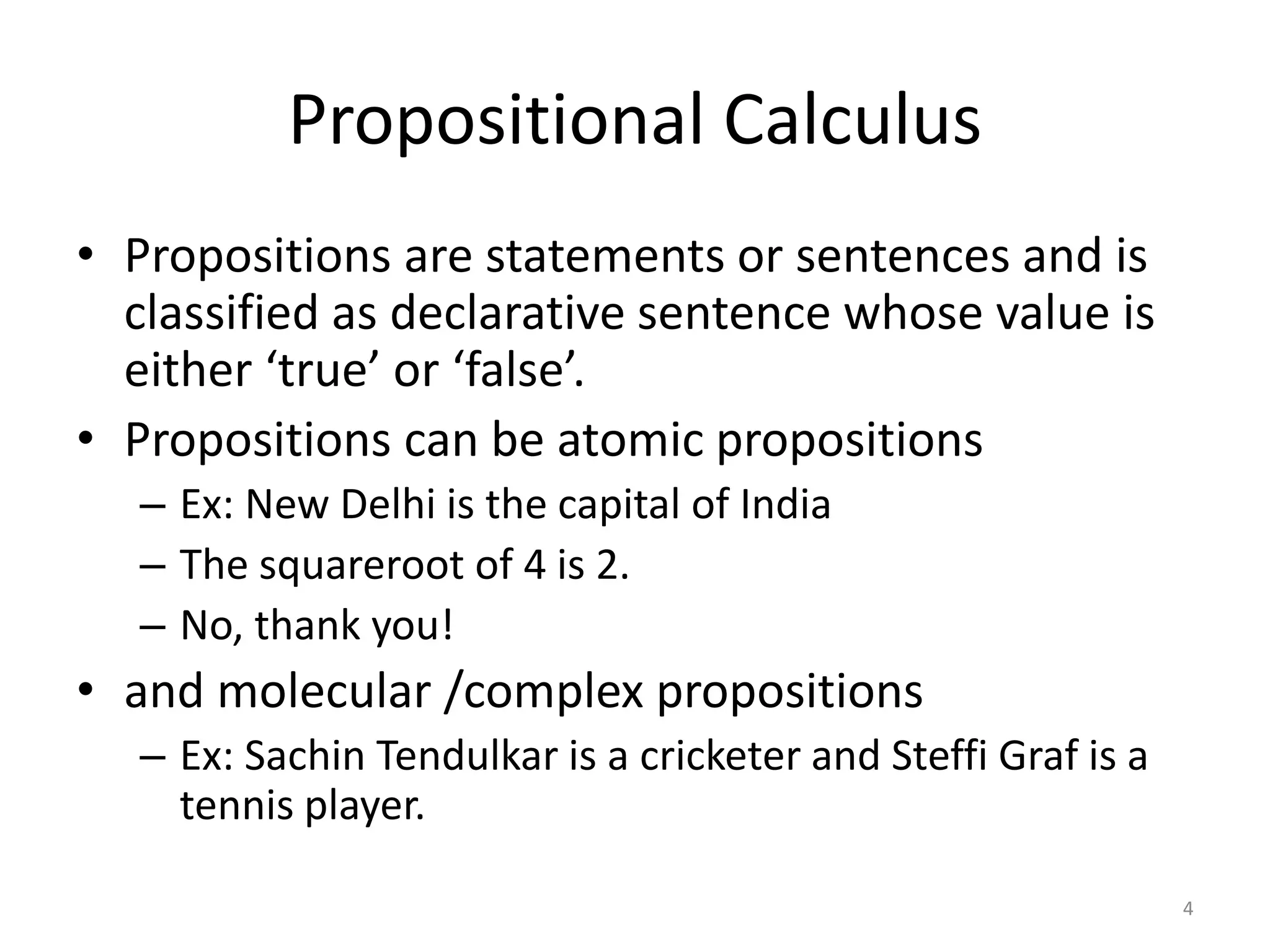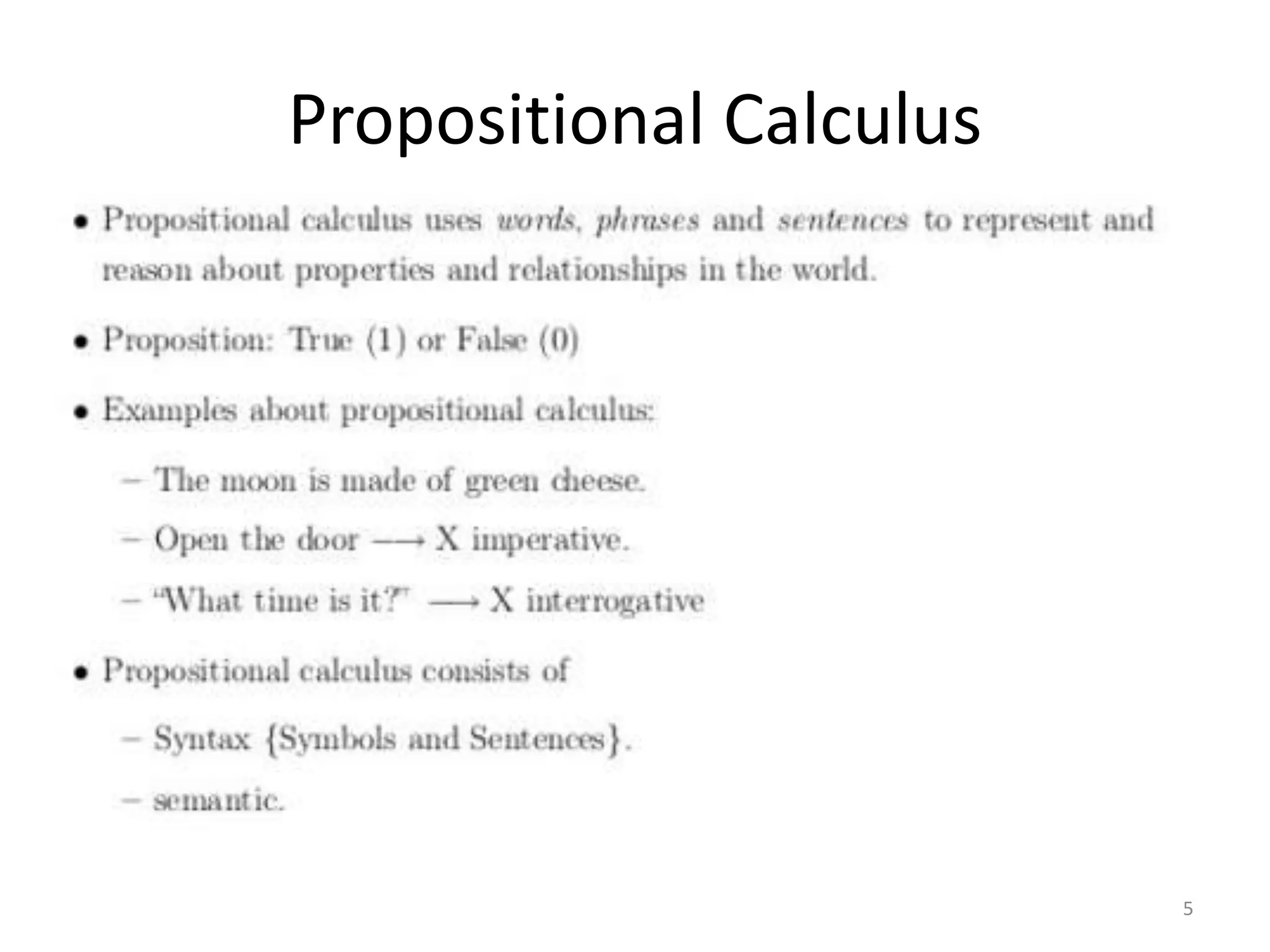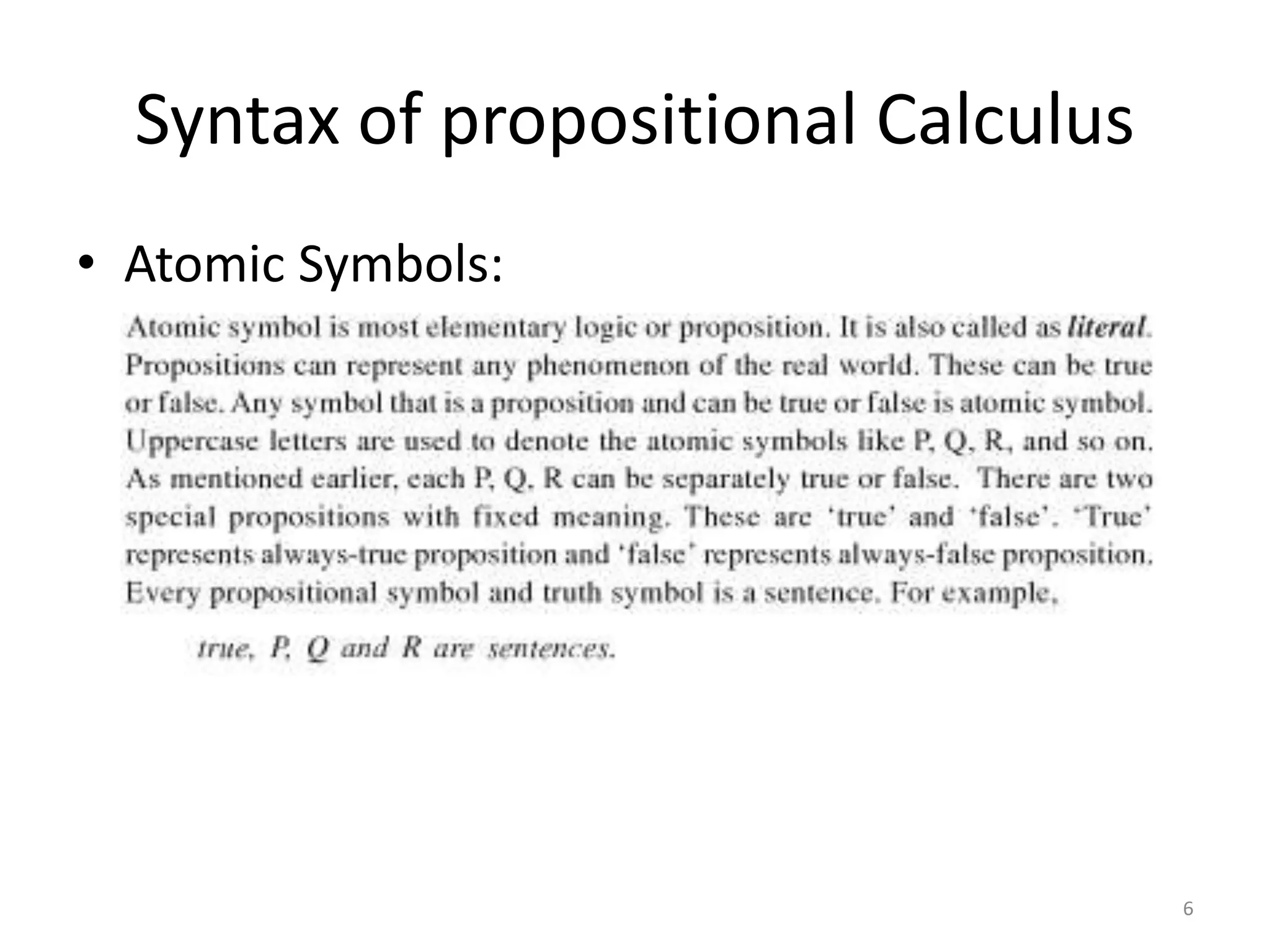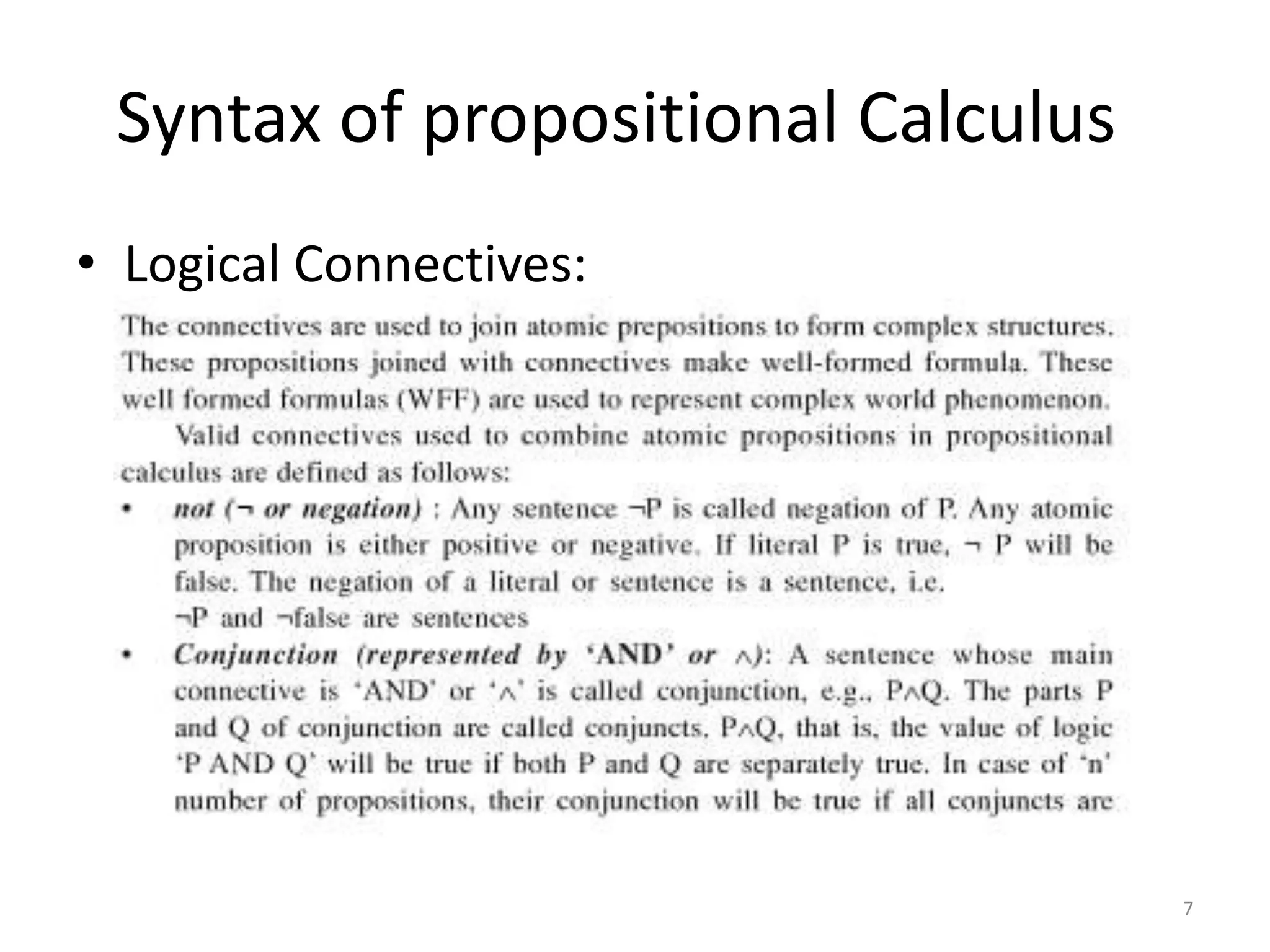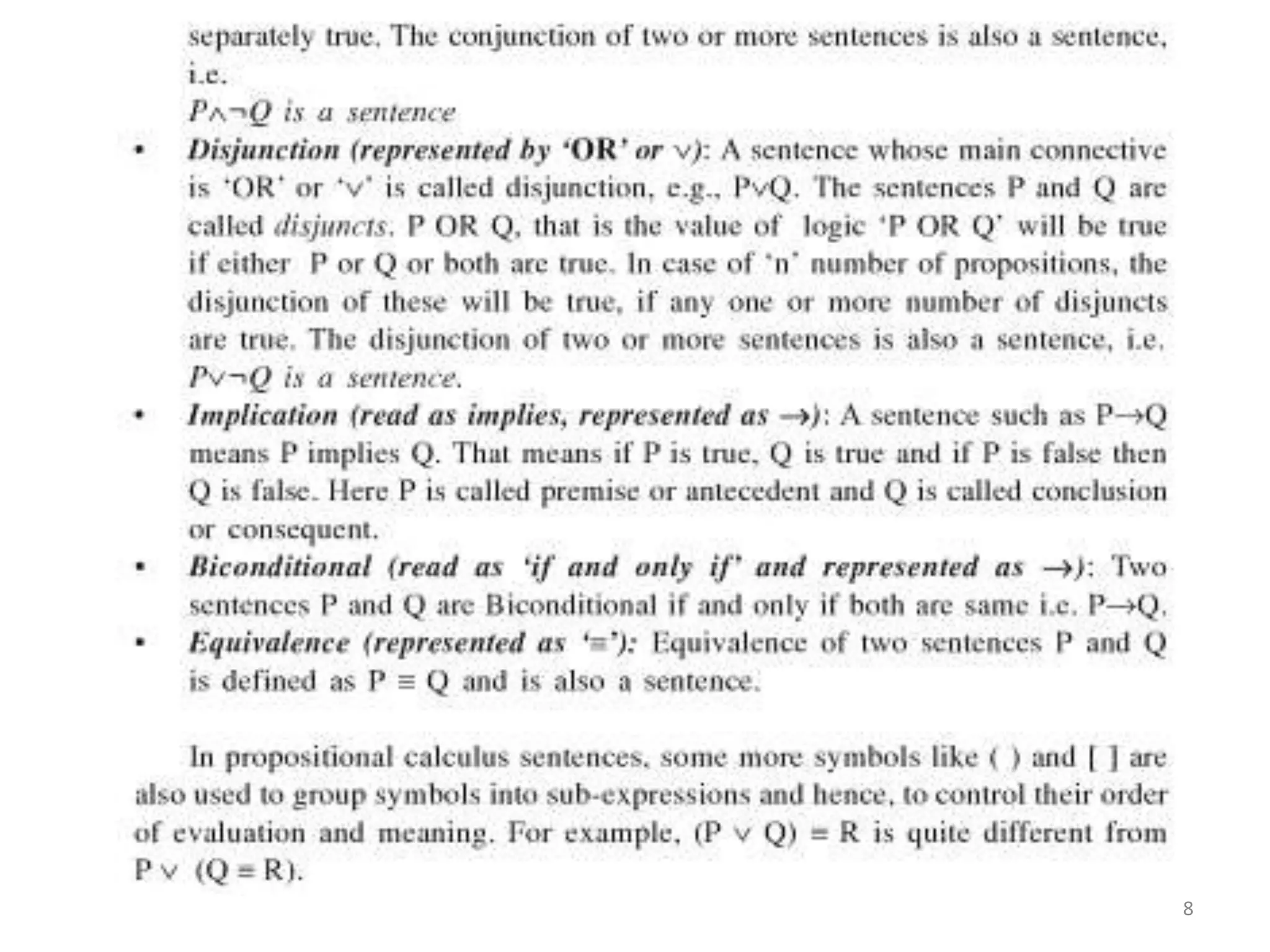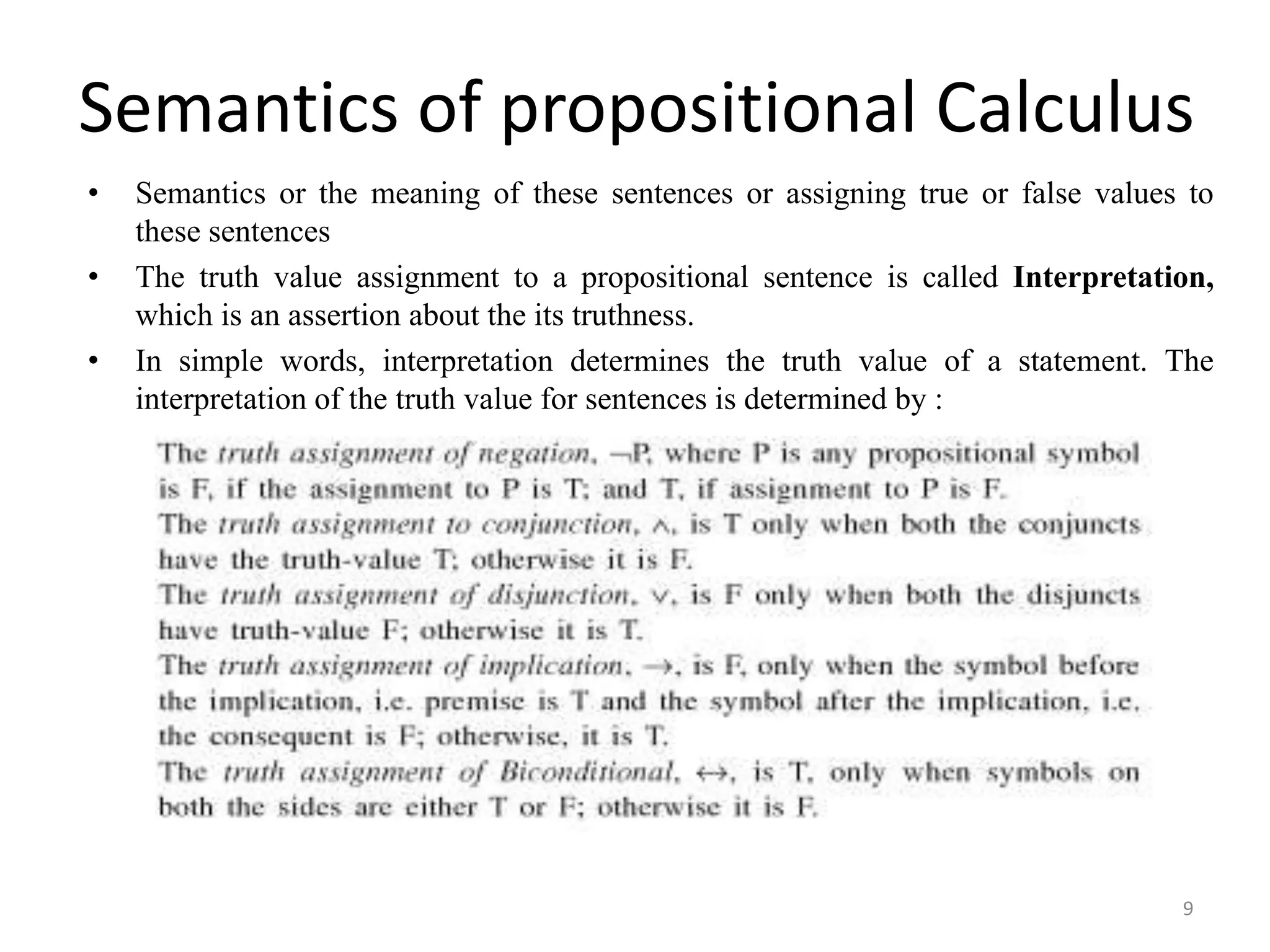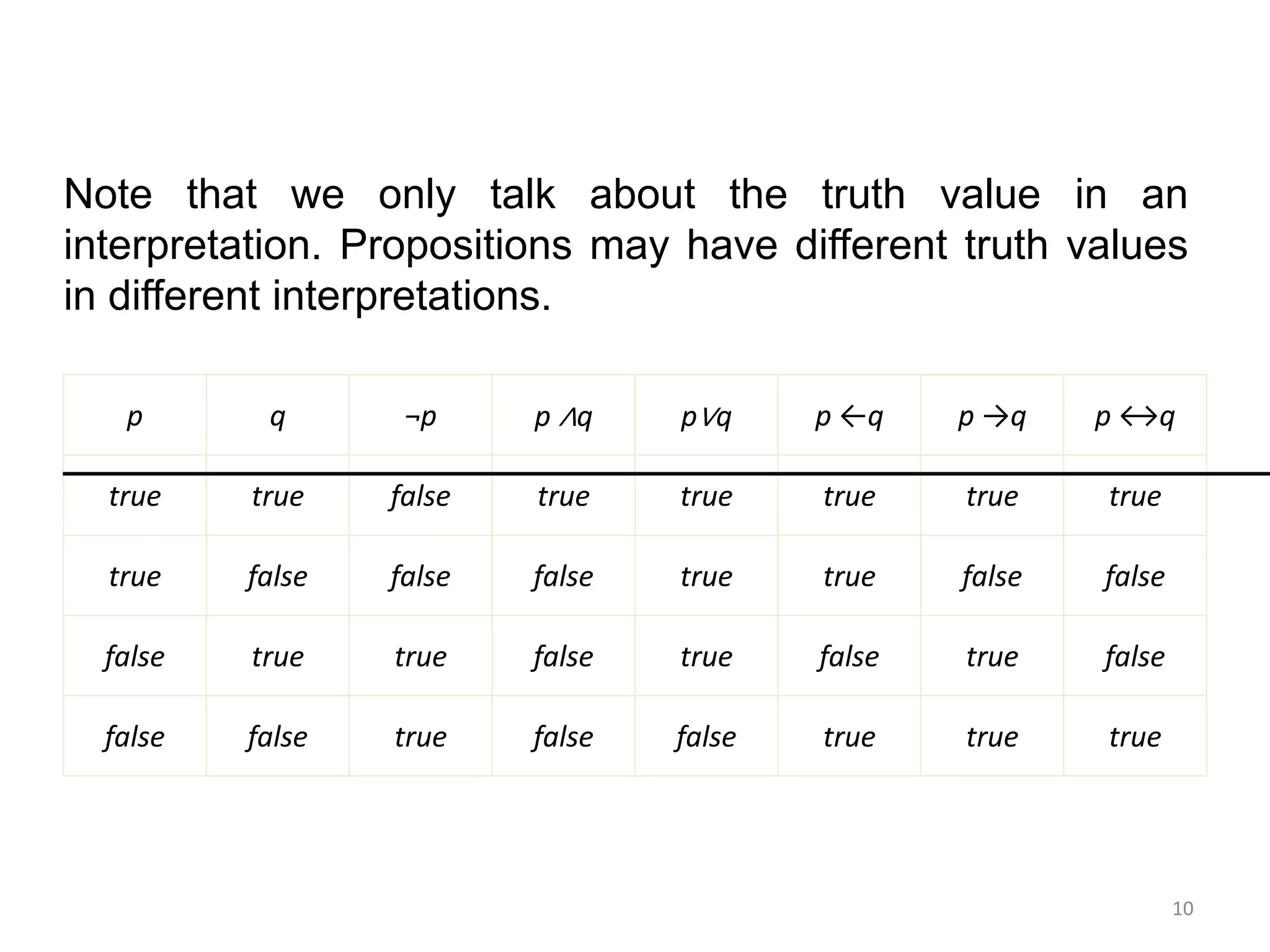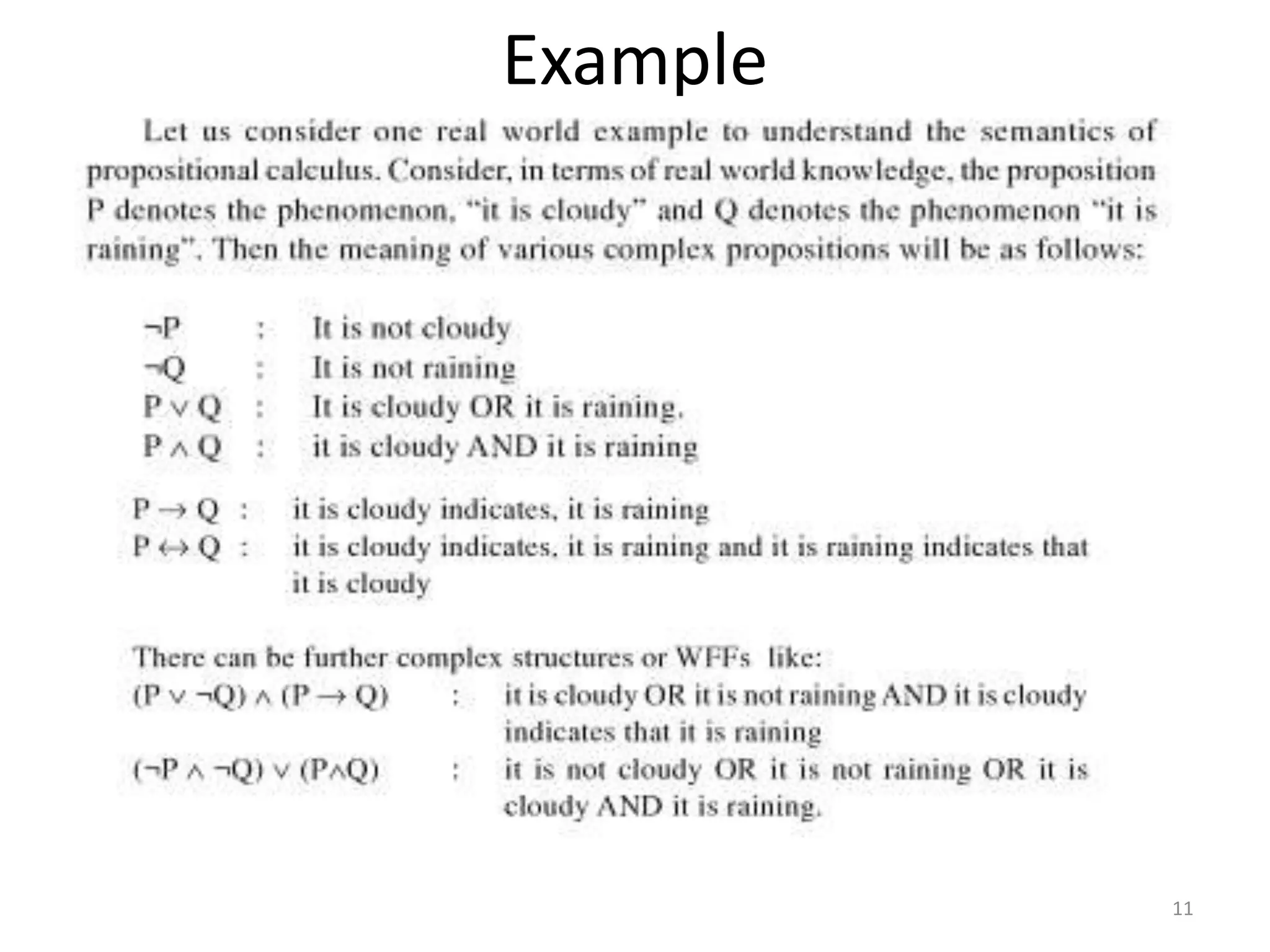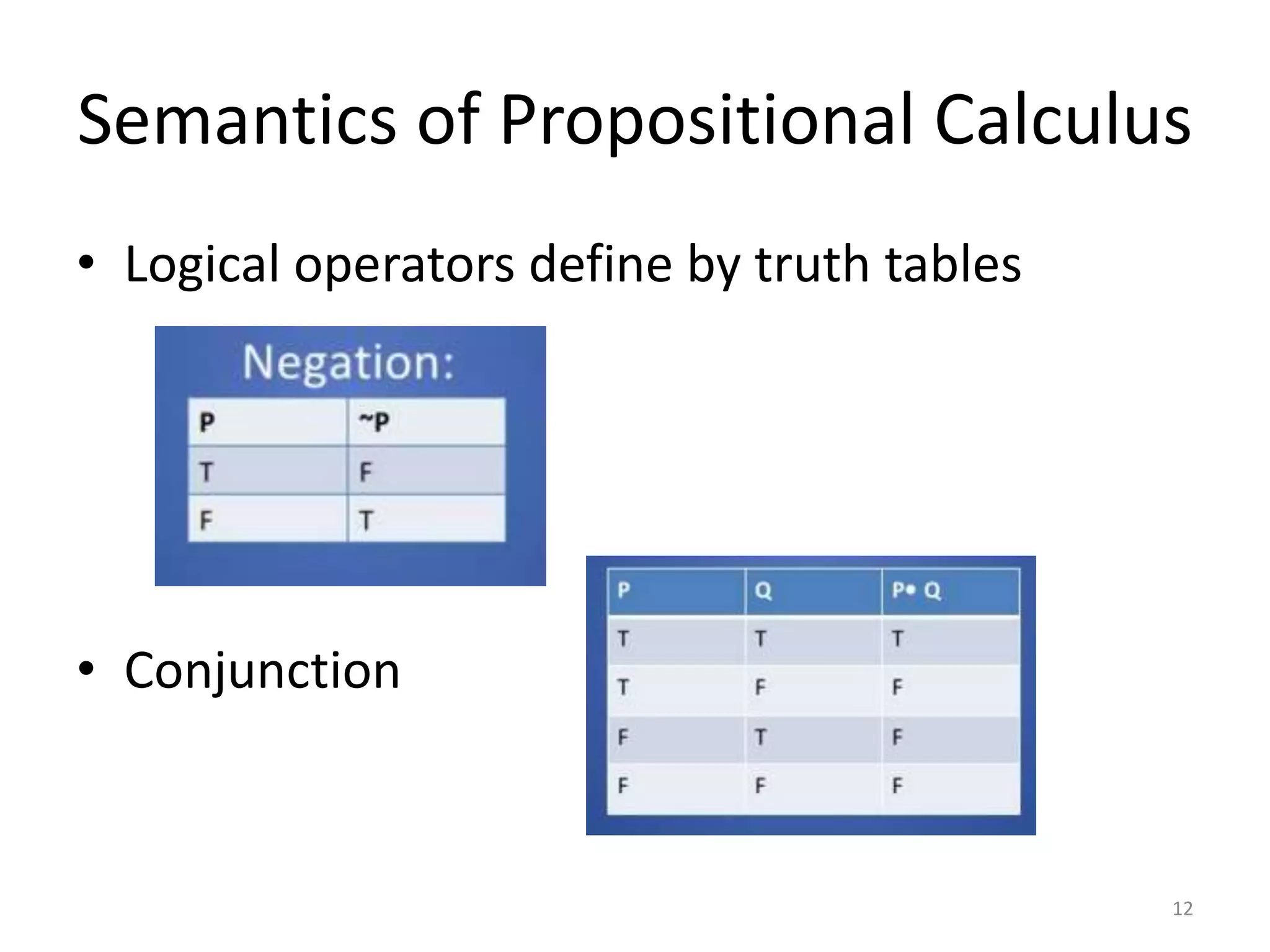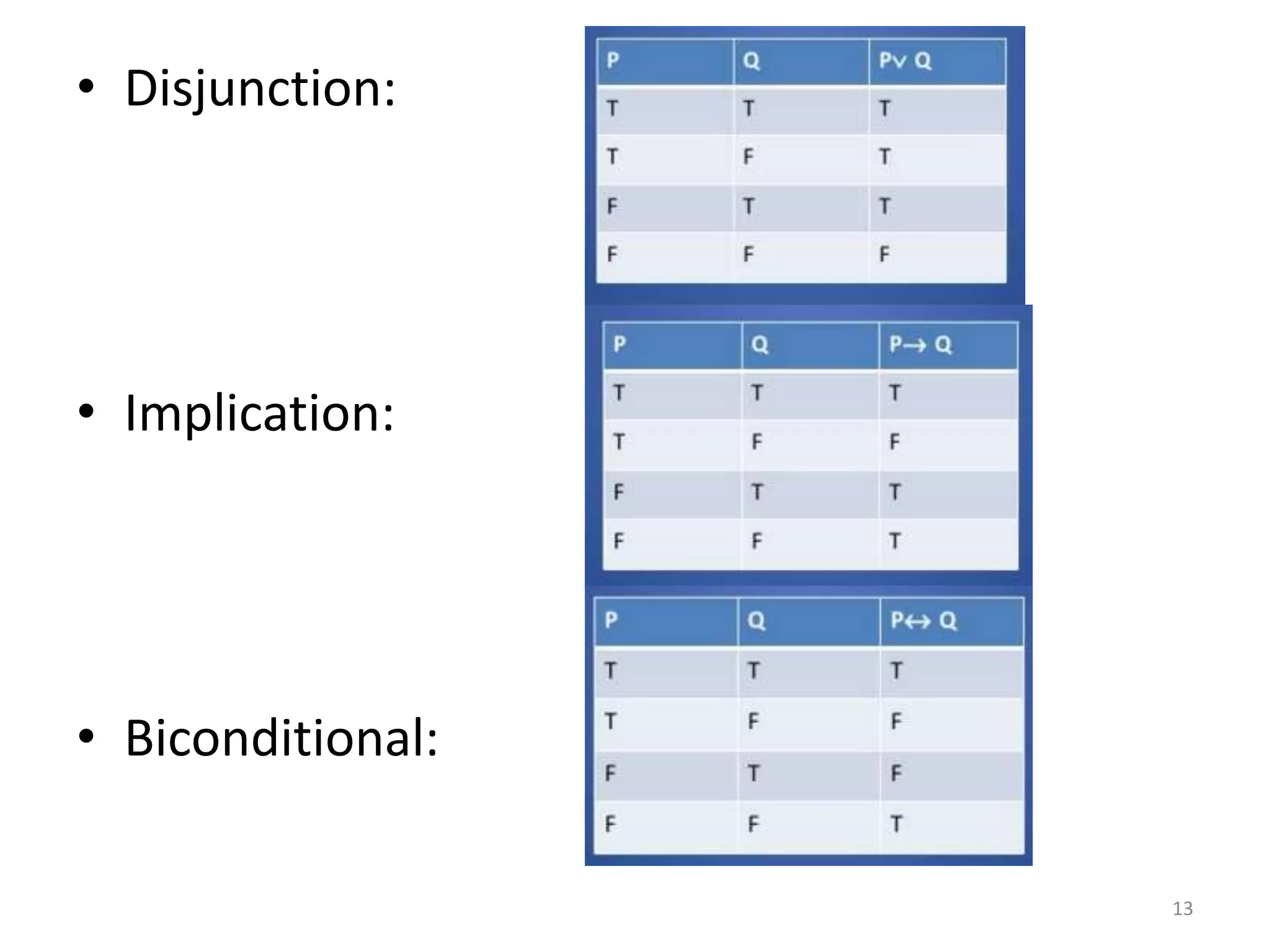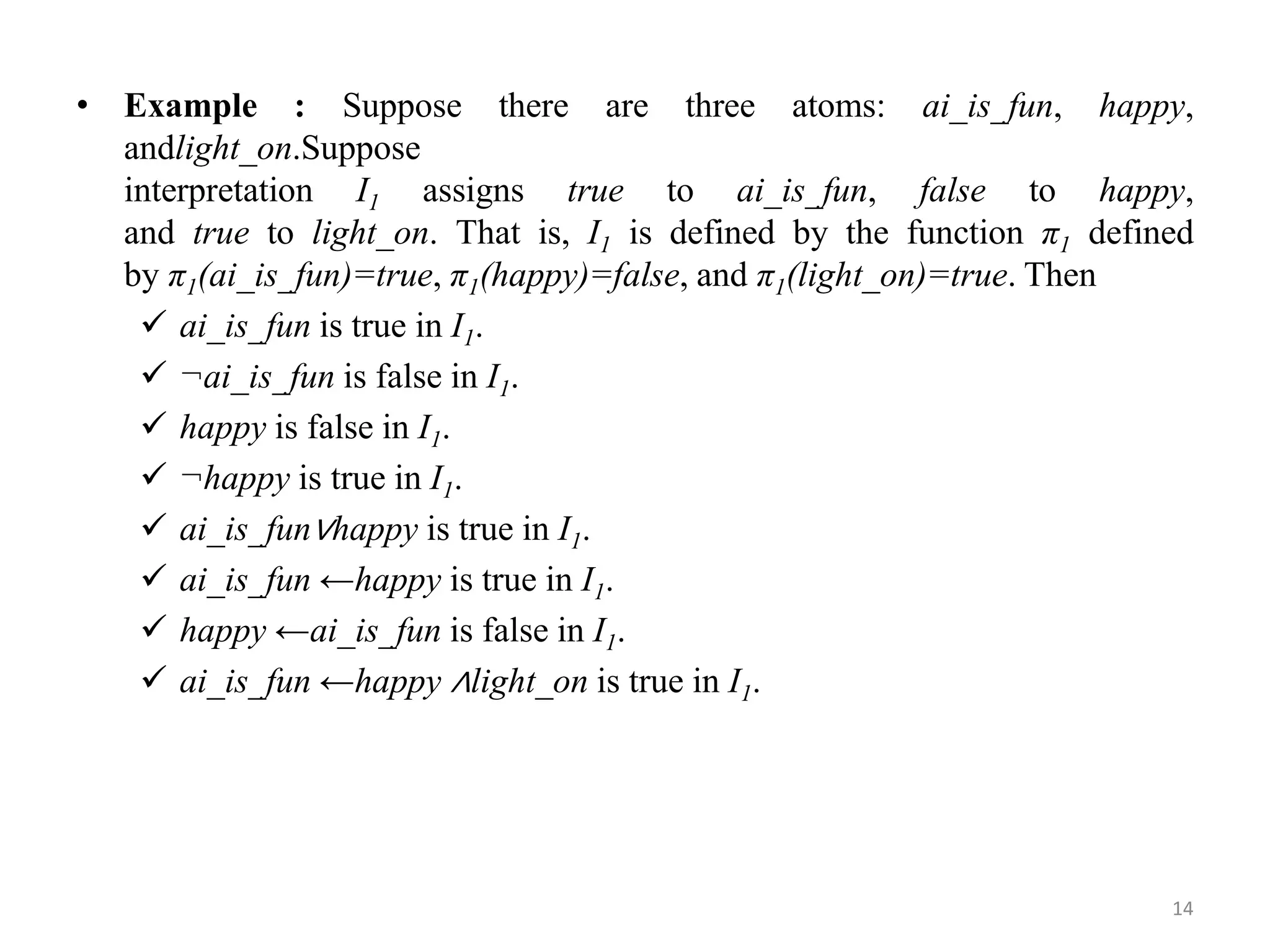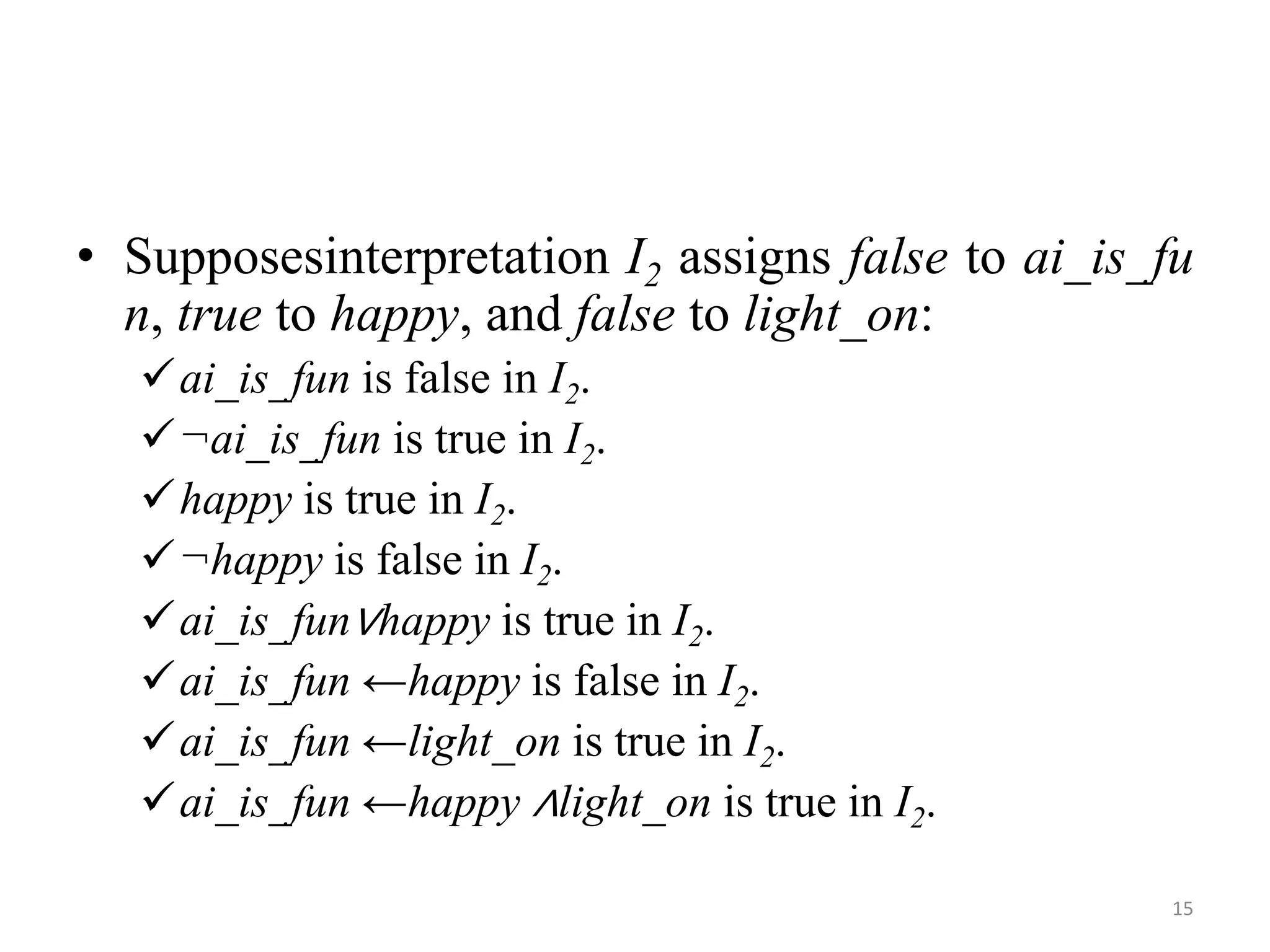This document provides an introduction to propositional logic and knowledge representation. It defines propositional logic as a formal language that can be used to represent facts and knowledge. Propositional logic uses logical connectives like conjunction, disjunction, implication and biconditional to combine atomic propositions into more complex propositions. The semantics or truth values of these propositions are determined using truth tables that define the logical operators. Examples are provided to illustrate how to determine the truth value of propositions under different interpretations.
